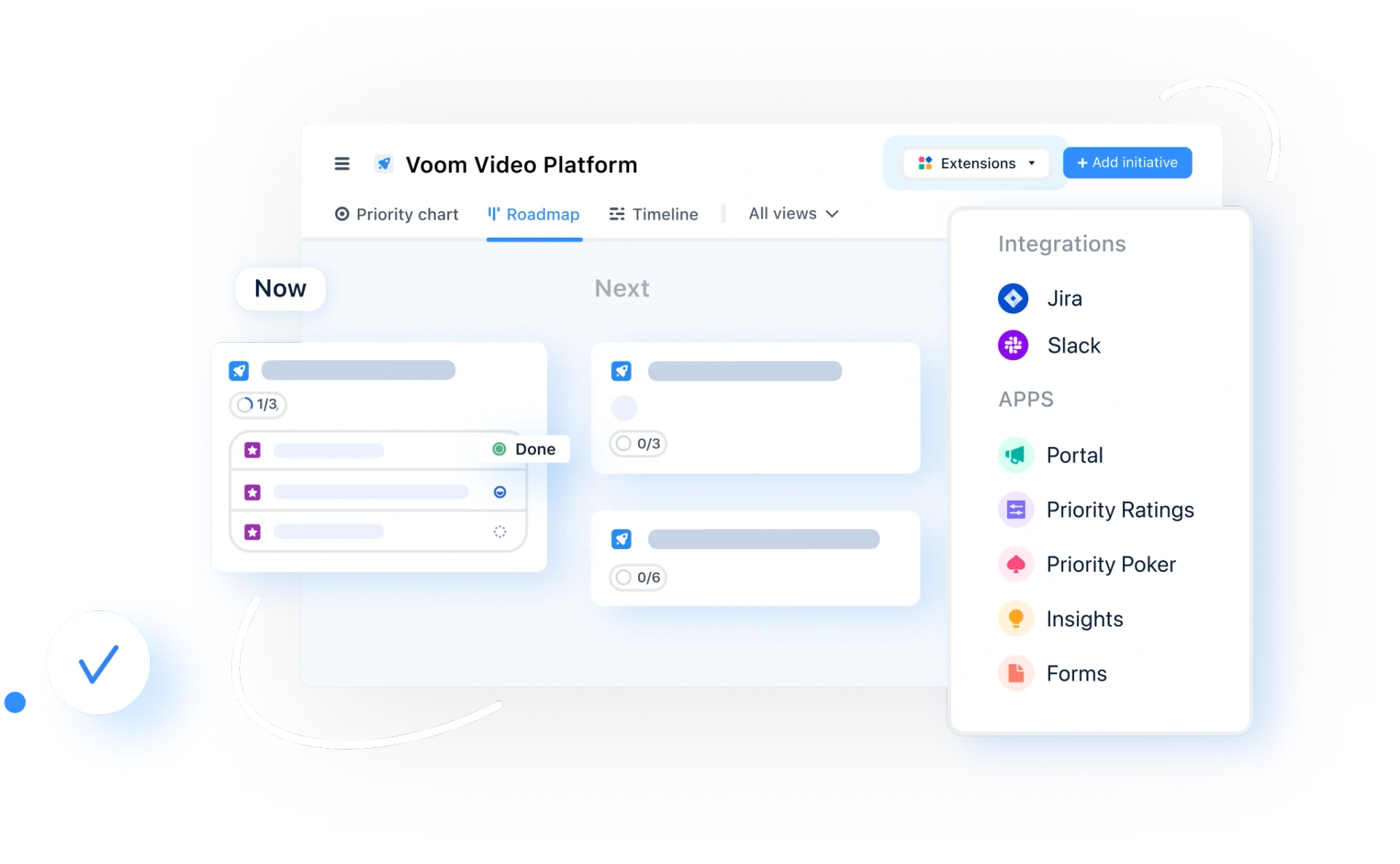
When you think of OKR software, you might imagine a set of static goals, occasional check-ins, and maybe a dashboard or two—in essence, a digital to-do list for your team's ambitions. And yes, that is critical. But what if your OKR tool could connect every project, every feature, and every conversation to a measurable business outcome? What if you could automate progress tracking for multiple teams – all in one place, and live?
That's the kind of transformation happening beneath the surface, with teams using airfocus. We spoke to our customer success team to understand what consistently surprises and delights airfocus users, and we've compiled a list of seven powerful (and sometimes underrated) OKR features. These are the capabilities that help teams not only set goals, but achieve them with greater clarity, alignment, and impact—and ultimately ensure that every task contributes to the overarching product strategy and business goals.
1. Truly flexible OKR hierarchies
airfocus doesn’t impose artificial limits on how you structure your objectives. You can build as many layers of OKRs as your organization needs—great for complex team setups or growing businesses. This flexibility allows you to mirror your unique company structure, whether you operate with traditional hierarchies, squads, or something entirely of your own.
2. Hybrid check-ins: Manual or automatic aggregation
Not every key result is measured the same way, which is why airfocus lets you decide—per objective and per key result – exactly how to track progress. Want to input a weekly number manually? You’ve got it. Prefer an automated roll-up from linked work items? Go for it. You can mix and match as you go, empowering product teams to work the way that fits best.
3. OKRs naturally embedded in your day-to-day product views
Unlike disconnected OKR tools, airfocus integrates your objectives and key results right into your existing product management workspaces. That means you’re always aware of how your daily work ties back to the big-picture goals—no more shuffling through spreadsheets or toggling tabs. Everything’s visible, up-to-date, and contextualized within your real roadmap and backlog views.

4. Key results: The unexpected conversation starter
One of the most thought-provoking aspects for new users? Mapping out key results. What sounds simple (“measure progress”) quickly becomes a meaningful exercise in strategy. Teams often realize they’ve defined an objective, but pinpointing exactly which levers to measure for success leads to productive, revealing discussions. Many clients describe these conversations as more valuable than they expected—often surfacing insights about focus and alignment they wouldn’t have had otherwise.
5. Direct links between OKRs and product initiatives
airfocus lets you link OKRs directly to initiatives, epics, and projects in your product management system. Why does this matter? Because as soon as work is completed or updated, progress automatically rolls up to the relevant objectives and key results. This automation drastically reduces manual updates and ensures that your strategy and execution remain tightly connected.
6. Granular permissions: Control who can see or edit at any level
In a fast-scaling organization, you need varying levels of access. airfocus gives you precise control over who can edit, comment, or simply view OKRs—at any level of your hierarchy. Admins can fine-tune these permissions per workspace, supporting both transparency for all and sensitive editing rights for chosen roles.
7. Custom fields for tailored filtering and reporting
airfocus workspaces support custom fields, letting you filter, group, and sort OKRs in ways that make sense to your team. Whether you want to filter by department, priority, strategic theme, or a custom tag, just create a field. This boosts clarity, personalization, and reporting power across all your OKRs.
We designed airfocus’ OKR software with a simple goal: moving teams from aspiration to achievement. Each feature was built to move beyond mere goal tracking; connecting every action to an outcome, automating tedious updates, and fostering a culture of clarity and alignment. By embedding OKRs into your daily work, you stop operating a feature factory and start actually contributing to your overarching product strategy.
Ready to see these features in action and discover how airfocus can transform your team's approach to goal-setting? Try a product walkthrough or book a demo today to experience how these powerful features can set up your team for success.
Additional resources
Is There a Perfect Way To Set OKRs? Insights From airfocus’ Own Journey – Malte Scholz
How To Plan and Keep Track of Your OKRs + 9 Best OKR Software Tools – Nouran El-Behairy
How to Write Effective OKRs in 5 Steps (+7 Mistakes to Avoid) – Kent McDonald
Emma-Lily Pendleton

Read also

Create effective product strategy

Experience the new way of doing product management




